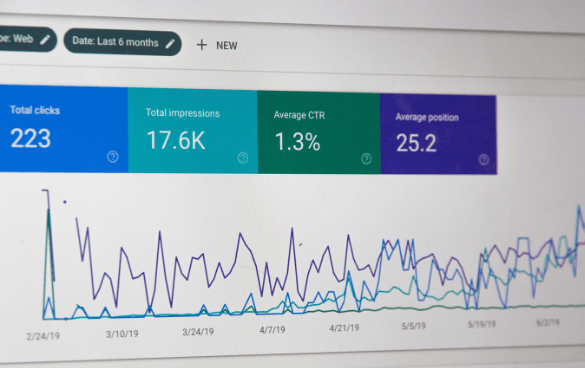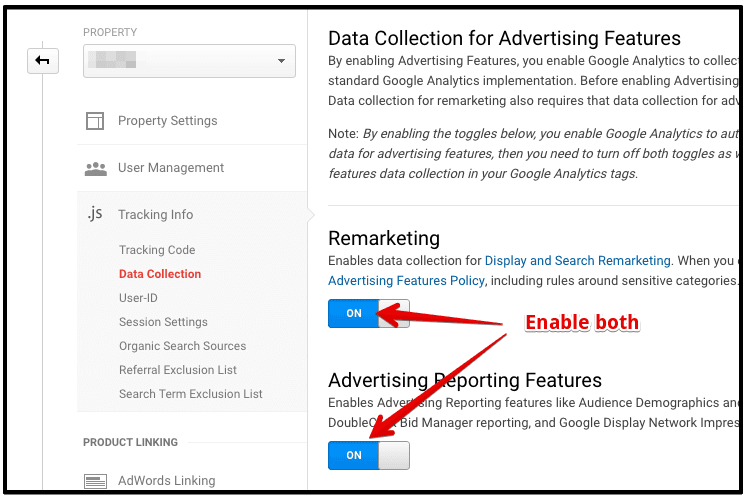Advanced Techniques for Remarketing In Google Analytics
Advanced Techniques for Remarketing In Google Analytics
Blog Article
Maximize Your ROI With Remarketing in Google Analytics
In the world of digital advertising and marketing, the use of remarketing techniques within Google Analytics has confirmed to be a powerful tool for improving roi. By harnessing the power of individual data and customizing ads to specific target market sections, organizations can significantly intensify their conversion prices. Nonetheless, the actual key hinge on the art of precision - understanding individual habits, crafting engaging ads, and continuously refining techniques to drive optimal outcomes. The journey to maximizing ROI with remarketing is a nuanced path led with understandings and opportunities that can improve the trajectory of your marketing ventures.
Comprehending Remarketing in Google Analytics
Recognizing remarketing in Google Analytics is essential for enhancing your digital advertising method. Remarketing permits you to target users who have actually previously visited your website or communicated with your application, presenting them with customized advertisements as they search various other sites or make use of other applications within the Google Show Network. This technique aids keep your brand name top of mind and encourages users to go back to your website, inevitably boosting the chance of conversion.
By making use of Google Analytics, you can track the performance of your remarketing projects, obtaining beneficial understandings right into customer behavior, involvement, and conversions. This data allows you to fine-tune your bidding process, messaging, and targeting strategies to boost the overall effectiveness of your campaigns.
In addition, recognizing the various sorts of remarketing listings readily available in Google Analytics, such as basic, vibrant, and comparable audiences, allows you to develop customized and extremely fractional projects tailored to particular customer sectors. This level of granularity can dramatically enhance the relevance and influence of your remarketing initiatives, eventually maximizing your roi.
Setting Up Remarketing Checklists
To properly apply remarketing campaigns in Google Analytics, the initial action involves configuring and creating remarketing lists targeting specific individual segments based on their communications with your website or application. By establishing remarketing listings, you can customize your advertising and marketing initiatives to get to customers that have currently revealed rate of interest in your items or services.
To begin, navigate to the Admin section of your Google Analytics account and select the Building where you intend to create the remarketing list. Under the Building column, click on 'Target market Definitions' and select 'Target markets.' Next, click the red 'New Audience' switch and select 'Create New' to specify the parameters for your remarketing checklist.

Crafting Efficient Remarketing Ads
When crafting your advertisements, emphasis on creating eye-catching headings and compelling visuals that attract attention to possible consumers. Integrate solid calls-to-action that urge users to revisit your website and complete a wanted action. Use vibrant remarketing to reveal customized advertisements including products or services that individuals have previously seen on your site.
In addition, make certain that your advertisements are mobile-friendly because a substantial section of web website traffic comes from mobile phones. Examination various advertisement variations to identify which styles and messages drive the best results. By constantly refining and maximizing your remarketing advertisements based on performance information, you can maximize their performance and improve your return on investment.
Studying Remarketing Efficiency

With Google Analytics, marketing professionals can track the efficiency of their remarketing projects in real-time, allowing them to determine fads, patterns, and areas for enhancement without delay. By assessing the information, marketing experts can establish which ads are doing well, which target market sectors are reacting positively, and which channels are driving one of the most conversions. This level of granularity allows marketers to make data-driven decisions to enhance their remarketing advocate far better outcomes.
Optimizing ROI With Remarketing
Examining remarketing information in Google Analytics makes it possible for online marketers to determine chances for maximizing roi (ROI) through calculated changes - What Is “Remarketing” In Google Analytics?. To maximize ROI with remarketing, it is crucial to comprehend the actions of your target market. By evaluating user interactions, such as the pages they visited, the products they viewed, or the activities they took on your site, you can tailor view it now your remarketing campaigns extra effectively
Segmenting your audience based on their behavior allows you to produce personalized and targeted advertisements that are more probable to reverberate with them. By revealing pertinent advertisements to certain segments of your audience, you can raise the possibilities of conversion and eventually enhance your ROI.
Furthermore, testing various ad creatives, messaging, and deals can help determine what reverberates finest with your audience. A/B screening enables you to try out different elements of your ads to identify what drives the greatest interaction and conversion rates.
Final Thought
To conclude, optimizing ROI with remarketing in Google Analytics needs a tactical technique to assessing customer habits, segmenting audiences, creating customized ads, and optimizing project efficiency. By leveraging data-driven understandings and evaluating various techniques, companies can enhance their remarketing efforts to drive higher interaction and read here conversion prices. This systematic strategy makes sure that sources are effectively allocated in the direction of making best use of rois in remarketing campaigns.
Next, click on the red 'New Audience' button and pick 'Produce New' to define the specifications for your remarketing checklist.
By constantly refining and enhancing your remarketing advertisements based on performance information, you can maximize their efficiency and improve your return on financial investment.
By delving into these understandings, marketers can get a comprehensive understanding my review here of exactly how their remarketing initiatives are resonating with their target audience and driving conversions. To make the most of ROI with remarketing, it is essential to understand the habits of your audience.In verdict, making best use of ROI with remarketing in Google Analytics calls for a tactical strategy to analyzing user actions, segmenting target markets, producing customized advertisements, and enhancing project efficiency.
Report this page